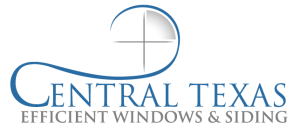
Characterized by hot summers with frequent heatwaves and intense sun exposure, the Texas climate demands that homes are built with durable materials. Well-suited for homes in Texas, fiber cement is an excellent option for siding installation. This siding material is made from a mixture of cement, sand, and cellulose fibers and is designed to mimic the appearance of wood, stucco, or masonry siding. Here are the advantages of fiber cement siding against heatwaves and sun exposure for Texas homes:
Thermal Stability
Fiber cement siding is engineered to withstand fluctuations in temperature, including the extreme heatwaves often experienced in Texas. It expands and contracts less than other siding materials in response to changes in temperature. Heatwaves in Texas can subject siding materials to rapid temperature changes, which can lead to warping, cracking, or other forms of damage. Fiber cement’s thermal stability helps prevent these issues by minimizing the effects of thermal stress on the material. This ensures that the siding remains flat, straight, and free from visible defects, maintaining its structural integrity and the aesthetic appeal of the home’s exterior. By minimizing the risk of warping, cracking, and other forms of damage, fiber cement siding ensures long-lasting performance and durability in the face of extreme temperature fluctuations.
Low Thermal Conductivity
Fiber cement siding has low thermal conductivity, meaning it does not readily transfer heat. Heatwaves can cause exterior surfaces of homes to absorb significant amounts of heat from the sun. By resisting heat transfer through the siding, fiber cement helps to minimize heat gain within the home’s walls, preventing the indoor spaces from becoming uncomfortably hot. This allows homeowners to maintain a more pleasant and livable environment indoors and reduces the need for excessive air conditioning, even during periods of extreme heat. The insulation provided by fiber cement siding helps reduce cooling loads and energy consumption, resulting in lower utility bills and decreased environmental impact. Fiber cement siding maintains its performance and durability over time, helping to sustain a comfortable indoor environment year-round.
UV Protection
UV radiation from the sun can cause pigments in siding materials to break down and fade over time, leading to a dull and weathered appearance. Fiber cement siding is usually formulated with additives that provide protection against UV radiation from the sun. These additives help block or absorb UV rays, preventing from penetrating the siding’s surface and causing damage. UV protection contributes to the long-term durability of fiber cement siding by preventing surface degradation and deterioration. By minimizing fading and discoloration, fiber cement’s UV protection helps maintain the appearance and integrity of the home’s exterior. This ensures that the siding retains its original beauty and attractiveness, enhancing the home’s curb appeal and property value.
Non-Combustibility
During heatwaves, when temperatures are high and vegetation may be dry, the risk of fire ignition from external sources increases. Fiber cement siding is composed of inherently non-combustible materials, such as cement, sand, and cellulose fibers. In the event of a nearby wildfire or other external source, fiber cement siding acts as a barrier that helps prevent flames from spreading to the interior of the home. Unlike combustible siding materials, fiber cement siding does not contribute to the spread of fire, helping to contain the blaze and limit the damage to the property. This property provides homeowners with added security and peace of mind in the face of extreme weather conditions.
Long-Term Durability
Fiber cement’s long-term durability ensures that homes remain protected and resilient in the face of heatwaves and sun exposures. Texas homes may also be exposed to occasional heavy rainfall and high humidity levels, which can lead to moisture-related issues such as mold, mildew, and rot. Fiber cement’s moisture resistance helps prevent water infiltration and damage, ensuring that the siding remains durable and resilient even in humid environments. Additionally, fiber cement siding is not susceptible to damage from pests, such as termites, woodpeckers, or rodents, which can be common in Texas. This pest resistance helps protect the siding from damage and degradation, ensuring its long-term durability and performance. Fiber cement siding requires minimal maintenance over its lifespan, reducing the need for costly repairs or replacements. This helps homeowners save time and money, while also ensuring that their homes remain protected and visually appealing for years to come.
Offering homeowners a reliable and resilient solution for protecting their homes, fiber cement siding can shield Texas homes from scorching heatwaves and harsh sun exposure.
